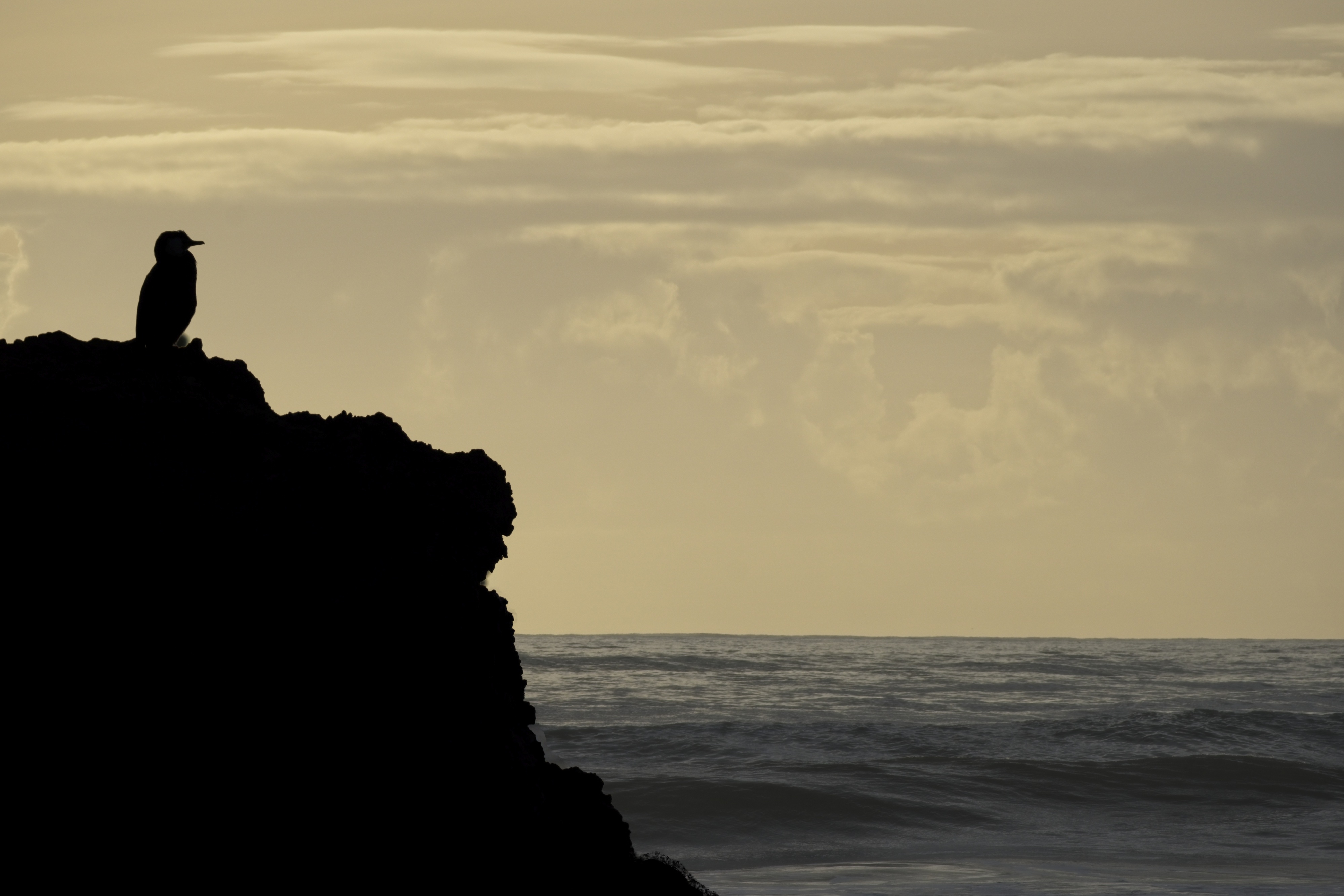Respiratory physician Lutz Beckert considers chronic obstructive pulmonary disease management, including the prevention of COPD, the importance of smoking cessation and pulmonary rehabilitation, and the lifesaving potential of addressing treatable traits. He also discusses the logic of inhaler therapy, moving from single therapy to dual and triple therapy when indicated, as well as other aspects of management
A deep dive on the West Coast
A deep dive on the West Coast

Jim Vause traverses Te Tai Poutini to explore the local flora and fauna, both underground and in the local cafes
“I thought there was a Buller District-specific te reo dialect, a residue of some pre-Waitaha tribe, but once I got my tongue around saying ‘Knack a War’ I was off like a Coaster”
I may as well have been speaking Dutch, such was the wave of incomprehension that swept across her face when I said we were off to Mokihinui. “Where?”
Dah. This was the Coast. Te Tai Poutini, that unique and largely untouched province that stretches across more latitudes than any other in this nation. Yes, time has passed BY the likes of Granity, Ngakawau and Hector, and so did we until we got to Little Wanganui. No “h” there.
“Oh, you mean Mock a Newey. Lovely spot, real nice campground and the Cowshed has good coffee.”
The vision raised by the prospect of coffee in a Cowshed was more of some watery instant than any arabica-infused latte. But the coffee at The Cowshed Cafe was as good as any on the Terrace, and the beach at Mokihinui was as stunning and wild as any on the Coast, so lesson learnt.
When on the Coast, do as the Coasters do. To correct a local’s pronunciation would just come across as “out-of-towner” cultural arrogance. So, saying Granity right was easy, as was Hector, but Ngakawau had me really stumped.
For a moment, I thought there was a Buller District-specific te reo dialect, a residue of some pre-Waitaha tribe, but once I got my tongue around saying “Knack a War” I was off like a Coaster.
Funnily enough, the only time I heard Māori pronounced as it should be was deep within the bowels of the earth when our Ōpārara tour guide described the flora of the limestone caves that riddle this part of Te Waipounamu.
That he was neither a local nor a Kiwi was a little galling, being as he was from the Western Island, but that was a trivial matter, countenanced by his incredibly knowledge of the history of our native flora and fauna.
To witness a speleological world inhabited by glow worms, kiwi bones, large kōura, a complete moa skeleton plus Powelliphanta (giant carnivorous snails) was rivalled only by the need to access the caves by walking through an ancient (10000-year-old) native forest, untouched by human predation. Aotearoa as it once was.
Were it not for the conservationists, who last century opposed the wholesale predation of our native forests by commerce, this natural wonder might well have been plundered and rendered into the sort of messy wilding pine-infested regeneration that stands in many parts of our nation - a monument to human folly that posterity will never be proud of.
They were brave people when you consider what the Coast was like in those days.
An idea has been floated over the years of building a tourist road through the Heaphy Track to form a loop joining Karamea to Nelson. This loop would bring tour buses, hotels and helicopters to the sleepy little hollow, transforming it into a mini Franz Josef Glacier.
COVID-19 has extinguished many tourism dreams and this is one that has been affected, for which our children’s children’s children will be grateful.
- Log in to post comments








![Barbara Fountain, editor of New Zealand Doctor Rata Aotearoa, and Paul Hutchison, GP and senior medical clinician at Tāmaki Health [Image: Simon Maude]](/sites/default/files/styles/thumbnail_cropped_100/public/2025-03/Barbara%20Fountain%2C%20editor%20of%20New%20Zealand%20Doctor%20Rata%20Aotearoa%2C%20and%20Paul%20Hutchison%2C%20GP%20and%20senior%20medical%20clinician%20at%20T%C4%81maki%20Health%20CR%20Simon%20Maude.jpg?itok=-HbQ1EYA)
![Lori Peters, NP and advanced health improvement practitioner at Mahitahi Hauora, and Jasper Nacilla, NP at The Terrace Medical Centre in Wellington [Image: Simon Maude]](/sites/default/files/styles/thumbnail_cropped_100/public/2025-03/2.%20Lori%20Peters%2C%20NP%20and%20advanced%20HIP%20at%20Mahitahi%20Hauora%2C%20and%20Jasper%20Nacilla%2C%20NP%20at%20The%20Terrace%20Medical%20Centre%20in%20Wellington%20CR%20Simon%20Maude.jpg?itok=sUfbsSF1)
![Ministry of Social Development health and disability coordinator Liz Williams, regional health advisors Mary Mojel and Larah Takarangi, and health and disability coordinators Rebecca Staunton and Myint Than Htut [Image: Simon Maude]](/sites/default/files/styles/thumbnail_cropped_100/public/2025-03/3.%20Ministry%20of%20Social%20Development%27s%20Liz%20Williams%2C%20Mary%20Mojel%2C%20Larah%20Takarangi%2C%20Rebecca%20Staunton%20and%20Myint%20Than%20Htut%20CR%20Simon%20Maude.jpg?itok=9ceOujzC)
![Locum GP Helen Fisher, with Te Kuiti Medical Centre NP Bridget Woodney [Image: Simon Maude]](/sites/default/files/styles/thumbnail_cropped_100/public/2025-03/4.%20Locum%20GP%20Helen%20Fisher%2C%20with%20Te%20Kuiti%20Medical%20Centre%20NP%20Bridget%20Woodney%20CR%20Simon%20Maude.jpg?itok=TJeODetm)
![Ruby Faulkner, GPEP2, with David Small, GPEP3 from The Doctors Greenmeadows in Napier [Image: Simon Maude]](/sites/default/files/styles/thumbnail_cropped_100/public/2025-03/5.%20Ruby%20Faulkner%2C%20GPEP2%2C%20with%20David%20Small%2C%20GPEP3%20from%20The%20Doctors%20Greenmeadows%20in%20Napier%20CR%20Simon%20Maude.jpg?itok=B0u4wsIs)
![Rochelle Langton and Libby Thomas, marketing advisors at the Medical Protection Society [Image: Simon Maude]](/sites/default/files/styles/thumbnail_cropped_100/public/2025-03/6.%20Rochelle%20Langton%20and%20Libby%20Thomas%2C%20marketing%20advisors%20at%20the%20Medical%20Protection%20Society%20CR%20Simon%20Maude.jpg?itok=r52_Cf74)
![Specialist GP Lucy Gibberd, medical advisor at MPS, and Zara Bolam, urgent-care specialist at The Nest Health Centre in Inglewood [Image: Simon Maude]](/sites/default/files/styles/thumbnail_cropped_100/public/2025-03/7.%20Specialist%20GP%20Lucy%20Gibberd%2C%20medical%20advisor%20at%20MPS%2C%20and%20Zara%20Bolam%2C%20urgent-care%20specialist%20at%20The%20Nest%20Health%20Centre%20in%20Inglewood%20CR%20Simon%20Maude.jpg?itok=z8eVoBU3)
![Olivia Blackmore and Trudee Sharp, NPs at Gore Health Centre, and Gaylene Hastie, NP at Queenstown Medical Centre [Image: Simon Maude]](/sites/default/files/styles/thumbnail_cropped_100/public/2025-03/8.%20Olivia%20Blackmore%20and%20Trudee%20Sharp%2C%20NPs%20at%20Gore%20Health%20Centre%2C%20and%20Gaylene%20Hastie%2C%20NP%20at%20Queenstown%20Medical%20Centre%20CR%20Simon%20Maude.jpg?itok=Z6u9d0XH)
![Mary Toloa, specialist GP at Porirua and Union Community Health Service in Wellington, Mara Coler, clinical pharmacist at Tū Ora Compass Health, and Bhavna Mistry, specialist GP at Porirua and Union Community Health Service [Image: Simon Maude]](/sites/default/files/styles/thumbnail_cropped_100/public/2025-03/9.%20Mary%20Toloa%2C%20Porirua%20and%20Union%20Community%20Health%20Service%20in%20Wellington%2C%20Mara%20Coler%2C%20T%C5%AB%20Ora%20Compass%20Health%2C%20and%20Bhavna%20Mistry%2C%20PUCHS%20CR%20Simon%20Maude.jpg?itok=kpChr0cc)